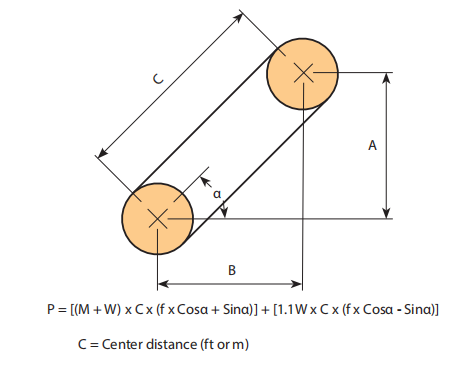Introduction
A cautious assessment from the problems surrounding a conveyor is important for accurate conveyor chain choice. This section discusses the essential considerations demanded for thriving conveyor chain choice. Roller Chains are often employed for light to moderate duty material dealing with applications. Environmental circumstances could need the usage of specific materials, platings coatings, lubricants or the means to operate devoid of more external lubrication.
Essential Info Essential For Chain Assortment
? Type of chain conveyor (unit or bulk) which include the process of conveyance (attachments, buckets, via rods etc).
? Conveyor layout which include sprocket destinations, inclines (if any) as well as the amount of chain strands (N) to get used.
? Amount of materials (M in lbs/ft or kN/m) and sort of materials for being conveyed.
? Estimated bodyweight of conveyor parts (W in lbs/ft or kN/m) such as chain, slats or attachments (if any).
? Linear chain speed (S in ft/min or m/min).
? Environment by which the chain will operate including temperature, corrosion circumstance, lubrication situation etc.
Stage one: Estimate Chain Stress
Make use of the formula below to estimate the conveyor Pull (Pest) and after that the chain tension (Check). Pest = (M + W) x f x SF and
Check = Pest / N
f = Coefficient of Friction
SF = Pace Component
Stage two: Produce a Tentative Chain Assortment
Making use of the Check value, make a tentative variety by picking out a chain
whose rated working load better than the calculated Check value.These values are proper for conveyor support and are diff erent from individuals proven in tables with the front on the catalog which are linked to slow velocity drive chain usage.
On top of that to suffi cient load carrying capacity typically these chains need to be of the sure pitch to accommodate a desired attachment spacing. By way of example if slats are for being bolted to an attachment every 1.five inches, the pitch of your chain selected need to divide into 1.5?¡À. Consequently a single could use a forty chain (1/2?¡À pitch) with all the attachments every single 3rd, a 60 chain (3/4?¡À pitch) with all the attachments every single 2nd, a 120 chain (1-1/2?¡À pitch) together with the attachments every pitch or possibly a C2060H chain (1-1/2?¡À pitch) with all the attachments just about every pitch.
Phase three: Finalize Variety – Calculate Real Conveyor Pull
Following making a tentative assortment we have to verify it by calculating
the real chain stress (T). To carry out this we must fi rst determine the real conveyor pull (P). From your layouts proven on the correct side of this web page choose the suitable formula and determine the total conveyor pull. Note that some conveyors can be a combination of horizontal, inclined and vertical . . . in that situation determine the conveyor Pull at every single part and include them with each other.
Step 4: Calculate Optimum Chain Stress
The utmost Chain Stress (T) equals the Conveyor Pull (P) as calculated in Step 3 divided from the amount of strands carrying the  load (N), occasions the Speed Element (SF) shown in Table 2, the Multi-Strand Element (MSF) proven in Table three and the Temperature Factor (TF) shown in Table 4.
load (N), occasions the Speed Element (SF) shown in Table 2, the Multi-Strand Element (MSF) proven in Table three and the Temperature Factor (TF) shown in Table 4.
T = (P / N) x MSF x SF x TF
Step five: Check out the ?¡ãRated Doing work Load?¡À in the Picked Chain
The ?¡ãRated Functioning Load?¡À of your selected chain should be better than the Greatest Chain Stress (T) calculated in Step 4 over. These values are suitable for conveyor service and therefore are diff erent from those shown in tables at the front of the catalog that are associated with slow speed drive chain utilization.
Phase 6: Check out the ?¡ãAllowable Roller Load?¡À of the Picked Chain
For chains that roll over the chain rollers or on best roller attachments it is necessary to test the Allowable Roller Load?¡À.
Note: the Roller load is determined by:
Roller Load = Wr / Nr
Wr = The total bodyweight carried by the rollers
Nr = The amount of rollers supporting the bodyweight.